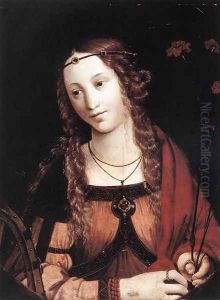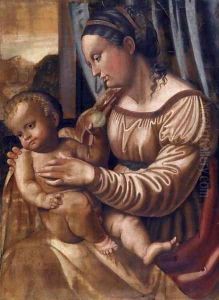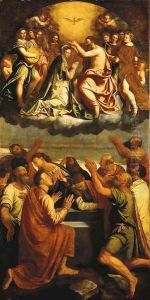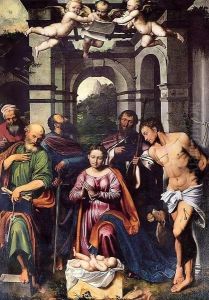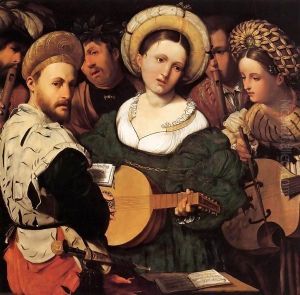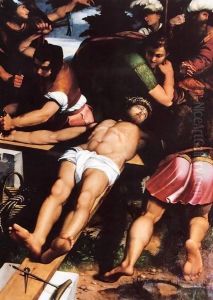Callisto Piazza Da Lodi Paintings
Callisto Piazza, also known as Callisto da Lodi, was an Italian Renaissance painter born in Lodi, Lombardy around the year 1500. He was part of the Lombard school and is noted for his distinctive style that incorporated aspects of Lombard and Venetian painting. His work was influenced by the likes of Leonardo da Vinci, Raphael, and the Venetian masters, which is evident in his use of color and light.
Piazza's early training is not well-documented, but it is believed that he may have been a pupil of the painter Giovanni Agostino da Lodi. He began to gain prominence in the 1520s, with his reputation spreading beyond his hometown to nearby cities such as Milan. His works from this period include religious compositions, frescoes, and altarpieces, many of which exhibit a clear understanding of perspective and anatomy, hallmarks of Renaissance art.
Throughout his career, Callisto Piazza received numerous commissions from religious institutions, which were the main patrons of the arts during that time. One of his most significant works is the altarpiece for the Church of San Francesco in Lodi, which showcases his skill in creating complex compositions with multiple figures. Piazza's art also reflects the transition from the High Renaissance to the Mannerist style, with some of his later works displaying the elongated forms and exaggerated poses characteristic of Mannerism.
Unfortunately, compared to other Renaissance artists, relatively little is known about Piazza's life, and only a portion of his oeuvre has been preserved or attributed with certainty to him. He died in 1561, leaving behind a body of work that, while not as widely recognized as that of his more famous contemporaries, provides valuable insight into the regional variations of Renaissance art in Italy.
